AMD Radeon HD 6950 & 6970 CrossFire Video Card Reviews
The Cayman GPU Architecture
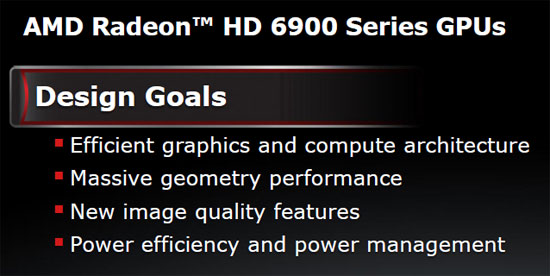
When AMD went to the drawing board for the Radeon HD 6900 series of
video cards they had some pretty big shoes to fill. They had originally
planned for this to be their first 32nm GPU, but since TSMC ruined those
plans they went back to the 40nm process and that might not be such a
bad thing as AMD has done very well with 40nm process designs. With
Cayman AMD wanted to focus on four new areas.
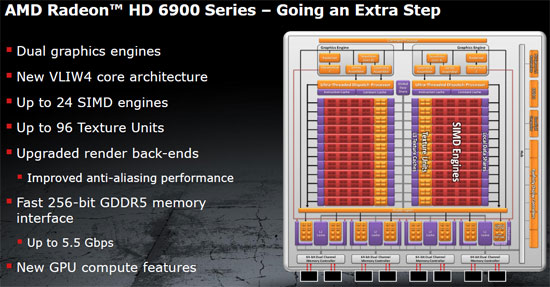
The AMD Radeon HD 6970 ‘Cayman’ GPU is comprised of 2.64 Billion transistors and the die size is ~389mm2 and that makes it slightly larger than the Radeon HD 5870 ‘Cypress’ GPU
that had ~2.1 billion transistors and a die site of 334mm2.
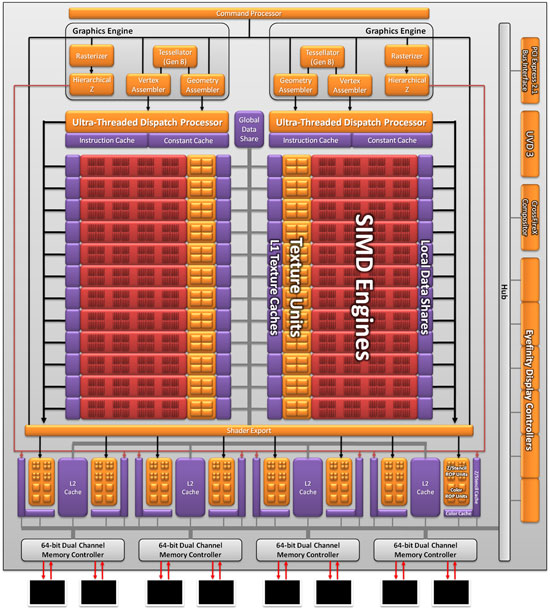
AMD has made a large number of changes on this new core, so here is a
large Cayman block diagram to check out. The AMD Radeon HD 6900 series
has dual GPU engines on the front end that help break up the data and
keep it flowing in nice and smoothly.
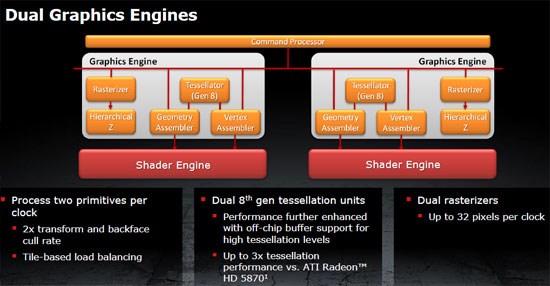
These both include 8th generation tessellation units that have over three
times the tessellation performance of what was in the Radeon HD 5870 GPU
core. As you can see from the die slide, the AMD Radeon HD 6970 has 24 SIMD
engines, 96 texture units, 32 ROPs and a 256-bit memory interface for
the 2GB of GDDR5 memory. Cayman also uses VLIW4 (Very Long Instruction
Word) design and AMD says it is worlds better than the VLIW5 that they
used on the Radeon HD 5800 series.
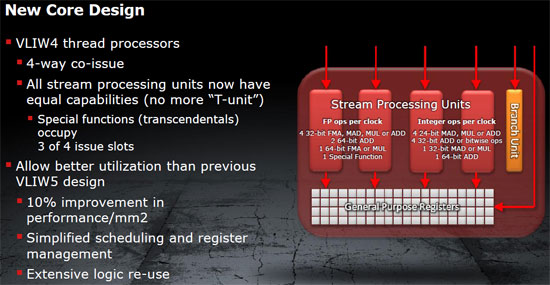
The VLIW4 design allows for 4-way co-issue that allows for up to a 10% improvement in performance/mm2.
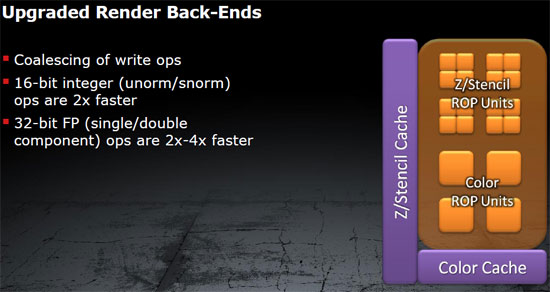
AMD has also upgraded the render back-ends that allow for coalescing of write ups, handle 16-bit integer (unorm/snorm) operations that are 2x faster and 32-bit floating point (single/double component) operations that are 2x-4x faster.
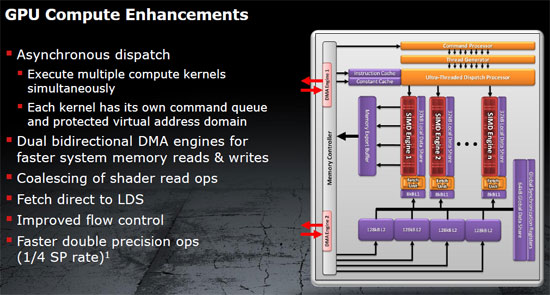
AMD has made many GPU compute enhancements as well. The most talked about to us was the Asynchronous dispatch that allows for execution of multiple compute kernels simultaneously. AMD told us that this design will improve performance when running a game with AMD’s new Morphological AA technology enabled or if the system is running Bullet Physics. Speaking of AA the Radeon HD 6900 series brings new image quality features like Enhanced Quality Anti-Aliasing (EQAA) to the table and it, of course, can do morphological anti-aliasing (MLAA).
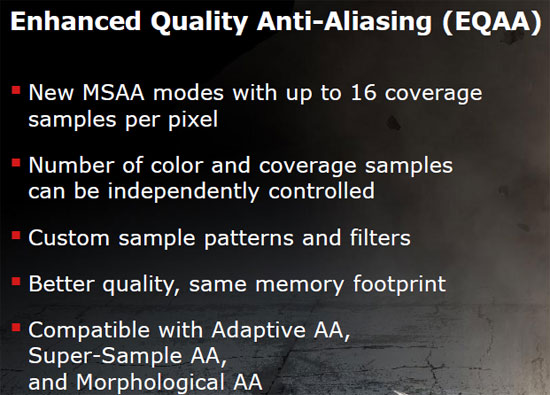
EQAA offers enhanced quality over standard Multi-Sample Anti-Aliasing (MSAA) modes by doubling the number of coverage samples per pixel, while keeping the same number of color / depth / stencil samples. This technique offers advanced smoothing of aliased edges without requiring additional video memory, and with a minimal performance hit.

Comments are closed.